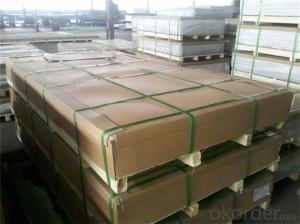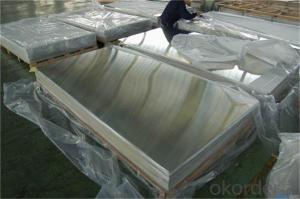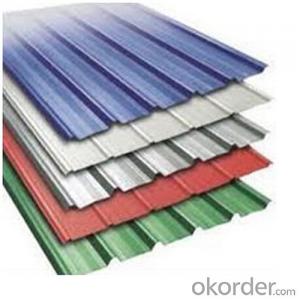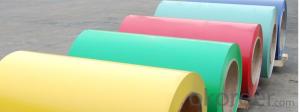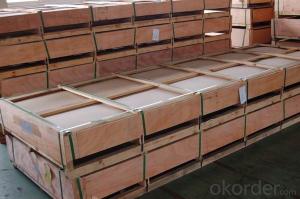Aluminum Sheet With Different Thickness And Temper Color Coated
- Loading Port:
- Shanghai
- Payment Terms:
- TT OR LC
- Min Order Qty:
- 5 m.t.
- Supply Capability:
- 100000 m.t./month
OKorder Service Pledge
OKorder Financial Service
You Might Also Like
Item specifice
Specifications
Grade
| 1000 Series: 1050 1060 1070 1100 1200 1235 etc. 3000 Series: 3003 3004 3005 3104 3105 3A21 etc. 5000 Series: 5005 5052 5083 5086 5154 5182 5251 5754 etc. 6000 Series: 6061 6063 6082 6A02 etc. 8000 Series: 8006 8011 8079 etc. |
Thickness | 0.2~320mm |
Width | <2800mm< span=""> |
Color | Metallic, Solid, RAL or by customer requirements |
Coating paint: | PVDF(Polyvinylidene Fluoride), PE(Polyester ) |
Coating thickness | as per customer’s request |
Gloss | 10-90%(EN ISO-2813:1994) |
Total coating thick | Polyester18~27micron(EN ISO-2360:1995) PVDF27 ~35micron(EN ISO-2360:1995) |
Coating hardness | 2H |
Protective film | PVC film, Colorless transparent or White-black |
Adhesion | 5B (EN ISO-2409:1994) |
Impact resistance | No cracking and peeling (A.S.T.M D2794-1993) |
Flexibility (T-bend) | 0T- 2T |
Temper | H16, H18, H24, H26, H26 |
Certification | ISO9001:2000, CE, SGS |
Payment | L/C ,T/T |
Brief Introduction for Cold Rolled Steel Coil
Cold Rolled Steel Coil is steel that has been worked below its recrystallization temperature by passing it between a pair of rollers. Recrystallization temperature is the temperature at which grains in the lattice structure of the metal have been rearranged, leaving it free of strain and deformations. Cold Rolled Steel Coil is pre-treated before being cold rolled with a process known as pickling, which uses strong acids to remove scale and other impurities. The Cold Rolled Steel Coil is then passed through rollers to reduce its thickness. Most cold rolling takes place in multiple passes and as the size of the Cold Rolled Steel Coil is further reduced, its strength and hardness both increase, but its ductility decreases. After cold rolling, heating the metal up in a process known as annealing can restore some of its ductility. The final Cold Rolled Steel Coil may be manufactured in the form of sheets, strips, bars, or other forms.
FAQ
1. How can I get some samples?
We are honored to offer you samples. New clients are expected to pay for the courier cost. The samples are free for you.
2 Do you have any certificates?
Our products passed inspection of SGS, FDA, and CE Quality is priority! Every worker keeps the QC from the very beginning to the very end, Quality control department especially responsible for quality checking in each process.
3 Can your factory print or emboss my logo on the goods?
Yes, we can print or emboss the logo on the goods or their packing box.
4 What information should I let you know if I want to get a quotation?
1) The specification of products (length x width x thickness);
2) The temper and alloy.
3) The final product you will use to be made
4 It will be better if you can show us the pictures or design sketch. Samples will be best for clarifying. If not, we will recommend relevant products with details for reference.We usually produce goods based on customers
Samples or based on customers’ picture, logo, sizes etc.
Our Services
1. Reasonable production arrangement to make delivery very fast;
2. We are able to provide leading tolerances, metallurgical assistance, quick and reliable delivery, samples for new products, etc.
3. We have the strong capability to meet your particular requirement for the products.
4.To guarantee the quality of the products we can meet most of the standards all over the world.
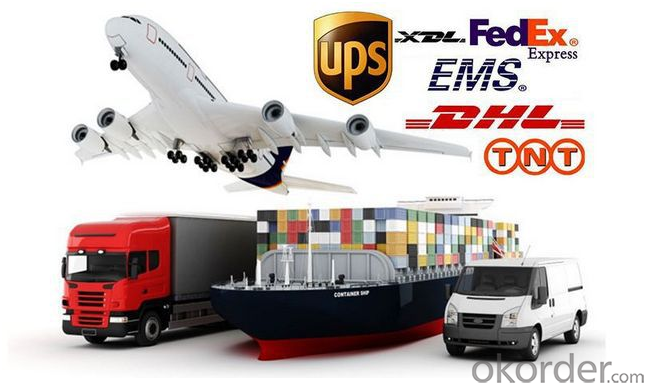
Photos of products

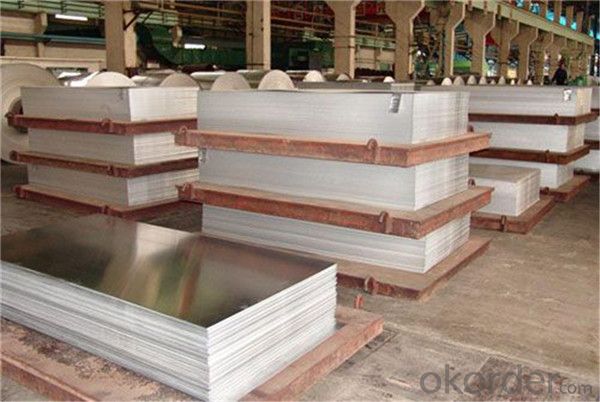
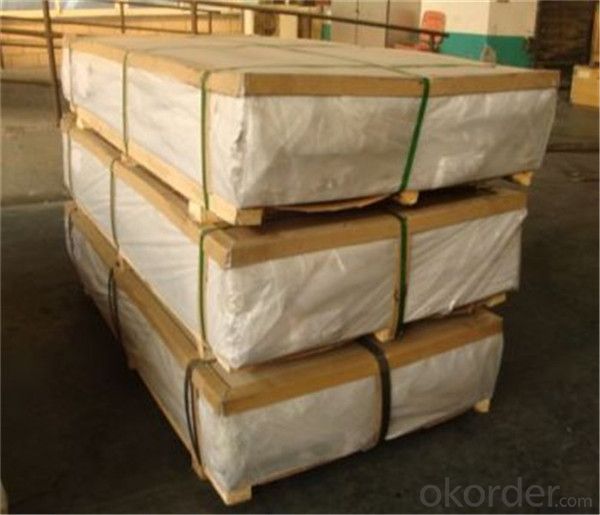
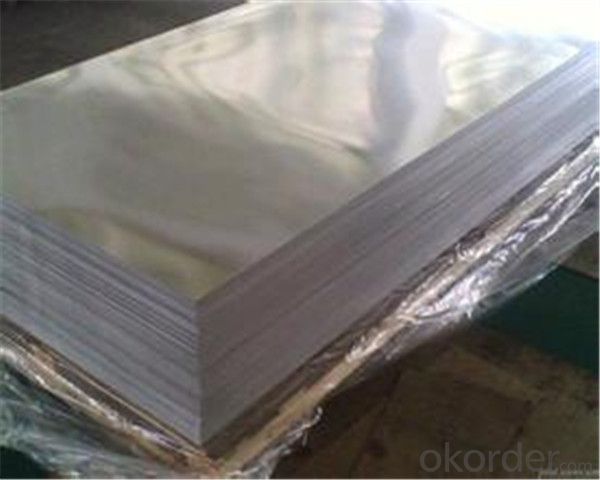
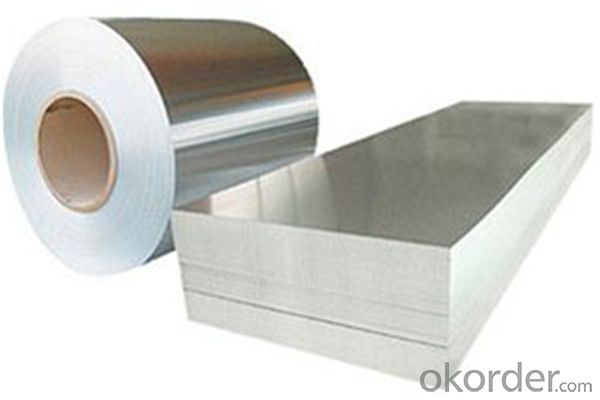
- Q:What is the thickness range available for 101 aluminum sheets?
- The thickness range available for 101 aluminum sheets can vary depending on the specific manufacturer and supplier. However, in general, 101 aluminum sheets are commonly available in thicknesses ranging from 0.016 inches (0.41 mm) to 0.25 inches (6.35 mm). It is important to note that this range is not exhaustive and there may be variations or custom thickness options available based on specific requirements or requests.
- Q:Can aluminum sheets be used in aerospace industry?
- Aluminum sheets find common usage within the aerospace industry due to their numerous desirable qualities. One of the foremost advantages is their lightweight nature, a critical factor for both aircraft and spacecraft. This characteristic aids in reducing fuel consumption and increasing the capacity for payload. Another significant attribute of aluminum is its exceptional strength-to-weight ratio, which imparts structural integrity to aerospace components. Furthermore, aluminum exhibits high resistance to corrosion, ensuring longevity and durability within harsh environments. Additionally, its commendable thermal conductivity qualifies it for heat dissipation in aerospace systems. Moreover, aluminum boasts easy formability, enabling the manufacturing of intricate shapes and structures. In summary, the versatility, strength, lightness, and corrosion resistance of aluminum make it the material of choice in the aerospace industry for diverse applications, including aircraft frames, fuselage panels, wings, and engine components.
- Q:What are the different surface finishes for aluminum sheets in the automotive industry?
- In the automotive industry, there are various surface finishes available for aluminum sheets. These finishes are applied to enhance the appearance, durability, and corrosion resistance of the aluminum sheets. Some of the commonly used surface finishes for aluminum sheets in the automotive industry include: 1. Mill Finish: This is the most basic finish available for aluminum sheets. It is the result of the aluminum being extruded and then passed through a rolling mill. Mill finish aluminum sheets have a smooth, shiny surface but may have slight imperfections or scratches. 2. Brushed Finish: Also known as satin finish, brushed aluminum sheets have a textured appearance achieved by brushing the surface with abrasive materials. This finish gives the aluminum a unique grain pattern and a slightly matte appearance. 3. Anodized Finish: Anodizing is an electrochemical process that creates a protective oxide layer on the surface of the aluminum sheet. Anodized aluminum sheets are highly resistant to corrosion and wear. They can be dyed in various colors and offer a more decorative and vibrant finish. 4. Polished Finish: Polished aluminum sheets have a reflective, mirror-like surface that is achieved through mechanical polishing or chemical processes. This finish is often used for decorative purposes and provides a high-end, glossy appearance. 5. Textured Finish: Textured aluminum sheets have a pattern or texture embossed onto the surface. This finish is commonly used for aesthetic purposes, as it adds visual interest and can help hide scratches or imperfections. 6. Painted Finish: Aluminum sheets can be painted to provide additional protection and improve aesthetics. Painted finishes can be customized to match the desired color or design scheme of the automotive industry. This finish offers excellent corrosion resistance and durability. The choice of surface finish for aluminum sheets in the automotive industry depends on the specific application, desired appearance, and functional requirements. Each finish has its own advantages and can contribute to the overall performance and visual appeal of the automotive parts or components.
- Q:Can 101 aluminum sheets be used for roofing or siding?
- Indeed, one can utilize 101 aluminum sheets for either roofing or siding purposes. Aluminum, renowned for its robustness, lightweight composition, and ability to resist corrosion, remains a favored material for both roofing and siding applications. Opting for aluminum sheets as a roofing or siding solution guarantees a durable outcome, capable of enduring adverse weather conditions with minimum upkeep. What's more, aluminum sheets are accessible in several thickness options, including 101, thereby providing flexibility to accommodate diverse design and structural requirements.
- Q:What are the different grades or alloys of aluminum available for sheets?
- There are several different grades or alloys of aluminum available for sheets, each with its own unique properties and characteristics. Some common grades include 3003, 5052, and 6061. - Grade 3003: This is a widely used grade of aluminum that offers good corrosion resistance and moderate strength. It is commonly used for general sheet metal work, as well as for cooking utensils, signage, and chemical equipment. - Grade 5052: This grade of aluminum is known for its excellent resistance to corrosion and high strength. It is often used for marine applications, such as boat hulls and components, as well as for aircraft parts and transportation equipment. - Grade 6061: This is a versatile grade of aluminum that offers good strength, weldability, and machinability. It is commonly used for structural components, such as frames, railings, and automotive parts. It is also frequently used in the construction industry for architectural purposes. In addition to these grades, there are many other specialized alloys of aluminum available for specific applications. These alloys may have enhanced characteristics, such as improved strength, heat resistance, or electrical conductivity. Examples of such alloys include 2024, 7075, and 6063. When selecting the appropriate grade or alloy of aluminum sheet, it is important to consider factors such as the desired strength, corrosion resistance, formability, and specific application requirements. Consulting with a knowledgeable supplier or expert can help ensure the right grade of aluminum is chosen for the intended use.
- Q:What are some common applications of aluminum sheets?
- Due to their unique properties, aluminum sheets find a wide range of applications. Some of the common uses of aluminum sheets include the following: 1. Construction: Aluminum sheets are extensively utilized in the construction industry for roofing, siding, and window frames. Their lightweight nature and durability make them an ideal choice for these purposes. 2. Automotive industry: Aluminum sheets play a crucial role in the automotive industry, where they are used to manufacture car bodies, panels, and components. The lightweight nature of aluminum aids in reducing the overall weight of vehicles, thereby enhancing fuel efficiency. 3. Packaging: Aluminum sheets are widely employed for packaging, particularly in the food and beverage industry. Their ability to preserve the freshness and quality of packaged products makes them suitable for producing cans, foils, and lids. 4. Aerospace industry: The aerospace industry heavily relies on aluminum sheets for manufacturing aircraft bodies, wings, and structural components. This is due to their high strength-to-weight ratio, resistance to corrosion, and capability to withstand extreme temperatures. 5. Electrical industry: Aluminum sheets find various applications in the electrical industry, including the production of electrical enclosures, transformers, and bus bars. The excellent conductivity and lightweight properties of aluminum make it a preferred choice for these purposes. 6. Marine industry: The marine industry extensively uses aluminum sheets for constructing boats, ship hulls, and other marine structures. Aluminum's resistance to corrosion and ability to withstand harsh marine environments make it a suitable material for these applications. 7. Decorative purposes: Aluminum sheets are commonly utilized for decorative purposes in architecture and interior design. They can be shaped, engraved, or coated with different finishes to create aesthetically pleasing surfaces for walls, ceilings, furniture, and signage. These examples highlight just a few of the many applications of aluminum sheets. The versatility, durability, and lightweight nature of aluminum make it highly sought-after in various industries.
- Q:What are the different methods of surface treatment for adhesive bonding of aluminum sheet?
- Aluminum sheet adhesive bonding can be enhanced through various surface treatment methods. These methods aim to improve the strength and durability of the adhesive joint. Some commonly employed techniques include: 1. Enhancing mechanical interlock: One approach involves roughening the aluminum surface using sandblasting, abrasion, or wire brushing. This creates a stronger mechanical interlock between the adhesive and the aluminum, ultimately increasing bond strength. 2. Chemical treatment for surface improvement: Chemical treatments can eliminate contaminants, oxidation, or corrosion from the aluminum surface. Acid etching, chromate conversion coating, or anodizing are commonly used methods. These treatments enhance surface cleanliness and promote adhesion by creating a chemically reactive surface for the adhesive. 3. Plasma treatment: Exposing the aluminum surface to a low-temperature plasma discharge modifies the surface energy and eliminates contaminants. This treatment enhances the adhesive's wettability and adhesion. 4. Primer coating: Applying a primer coat on the aluminum surface facilitates chemical bonding between the adhesive and the substrate. Primers are designed specifically to enhance adhesion to certain substrates, thereby improving bond strength and durability. 5. Surface activation: Techniques like flame treatment or corona treatment can increase the surface energy of the aluminum sheet. These methods generate free radicals on the surface, thereby improving the adhesive's bonding characteristics. It's worth noting that the choice of surface treatment method depends on factors such as the specific adhesive used, desired bond strength, application requirements, and the condition of the aluminum surface. It is advisable to consult adhesive manufacturers or experts to determine the most suitable surface treatment method for a particular adhesive bonding application.
- Q:What are the different methods of joining aluminum sheets?
- There are several methods of joining aluminum sheets, including welding, adhesive bonding, mechanical fastening (such as riveting or screwing), and clinching. Each method has its own advantages and considerations, depending on the specific application and desired outcome.
- Q:Can aluminum sheets be used for interior design purposes?
- Certainly, aluminum sheets are a great option for interior design purposes. The versatility of aluminum as a material offers numerous advantages when it comes to interior design applications. Its lightweight nature, durability, and resistance to corrosion make it an excellent choice for various design elements like wall coverings, ceiling panels, backsplashes, and room dividers. Aluminum sheets can be easily tailored and shaped into different forms, sizes, and finishes, providing limitless design possibilities. Moreover, aluminum is an environmentally-friendly material as it can be highly recycled. Its sleek and contemporary appearance adds a modern touch to any interior design project. In summary, aluminum sheets have gained popularity among interior designers due to their practicality, visual appeal, and sustainable nature.
- Q:What are the different types of surface coatings for aluminum sheets?
- There are several types of surface coatings available for aluminum sheets, including anodizing, powder coating, painting, and laminating.
1. Manufacturer Overview |
|
|---|---|
| Location | |
| Year Established | |
| Annual Output Value | |
| Main Markets | |
| Company Certifications | |
2. Manufacturer Certificates |
|
|---|---|
| a) Certification Name | |
| Range | |
| Reference | |
| Validity Period | |
3. Manufacturer Capability |
|
|---|---|
| a)Trade Capacity | |
| Nearest Port | |
| Export Percentage | |
| No.of Employees in Trade Department | |
| Language Spoken: | |
| b)Factory Information | |
| Factory Size: | |
| No. of Production Lines | |
| Contract Manufacturing | |
| Product Price Range | |
Send your message to us
Aluminum Sheet With Different Thickness And Temper Color Coated
- Loading Port:
- Shanghai
- Payment Terms:
- TT OR LC
- Min Order Qty:
- 5 m.t.
- Supply Capability:
- 100000 m.t./month
OKorder Service Pledge
OKorder Financial Service
Similar products
New products
Hot products
Hot Searches
Related keywords
